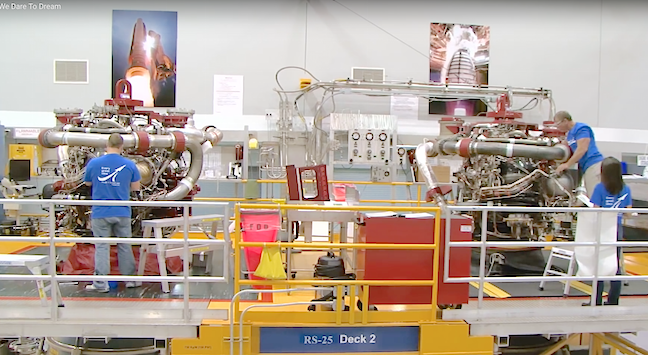Aerojet Rocketdyne, Inc., a subsidiary of Aerojet Rocketdyne Holdings, Inc. (NYSE:AJRD), cranked up the heat and passed the test.

Aerojet Rocketdyne successfully conducted a series of hot-fire tests on a Power Processing Unit (PPU) for an Advanced Electric Propulsion System (AEPS) designed to further the nation’s commercial space capabilities as well as support NASA’s plans for deep space exploration. The tests were conducted at NASA’s Glenn Research Center in Cleveland, Ohio.
Julie Van Kleeck, vice president of Advanced Space and Launch Programs and Strategy at Aerojet Rocketdyne said that the Power Processing Unit successfully demonstrated stable operation of the propulsion system and responded appropriately to all of their planned contingency scenarios. She added that this is a critical step in providing advanced Solar Electric Propulsion (SEP), which is necessary for affordable cargo and logistics transportation in support of human missions to Mars.
Aerojet Rocketdyne’s CEO and President Eileen Drake added that Aerojet Rocketdyne has a long successful history designing and developing electric propulsion systems, and they look forward to maturing high power Hall systems for multiple applications, including NASA, defense and commercial missions. She offered her congratulations to everyone involved in advancing this critical technology that will change the way humans explore space.
The tests were performed in conjunction with NASA’s Technology Development Unit thruster and a Xenon Flow Control Unit. They are being conducted as part of a $65 million contract that NASA awarded Aerojet Rocketdyne in April 2016. Under the contract, Aerojet Rocketdyne will develop, qualify and deliver five 12.5 kilowatt Hall thruster subsystems, including thrusters, PPUs and xenon flow controllers. The AEPS Hall thrusters deliver twice the thrust when compared to Aerojet Rocketdyne’s state-of-the-art XR-5 Hall thrusters, which are presently used to deliver government and commercial satellites to their geosynchronous orbit. According to NASA, work performed under the contract could increase spacecraft transportation fuel efficiency by 10 times over current chemical propulsion technology.
Aerojet Rocketdyne is maturing the thruster system under development at Glenn with support from NASA’s Jet Propulsion Laboratory in Pasadena, California, to a flight system capable of 23,000 hours of life. This flight propulsion system will form the core of SEP vehicles that NASA can use for efficient transportation of habitats and cargo needed for human exploration of deep space destinations beyond low-Earth orbit.
Aerojet Rocketdyne received the contract from NASA as part of the Solar Electric Propulsion Technology Demonstration Mission, which is funded under the Space Technology Mission Directorate.

